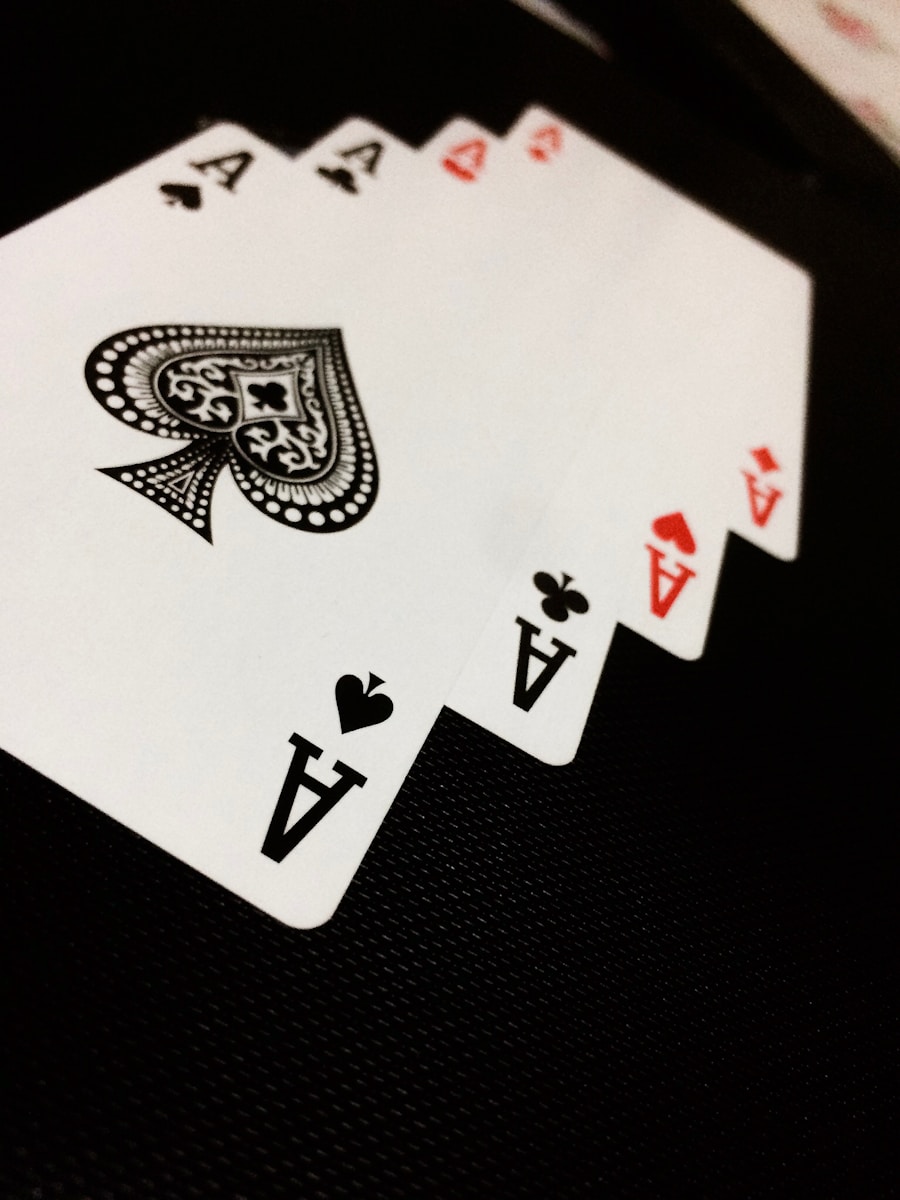Download links
How to install Mastering the Art of Blackjack: Tips and Strategies APK?
1. Tap the downloaded Mastering the Art of Blackjack: Tips and Strategies APK file.
2. Touch install.
3. Follow the steps on the screen.
Description
Blackjack, often referred to as twenty-one, is a popular card game that combines elements of chance and skill. The objective is straightforward: players aim to have a hand value that is closer to 21 than the dealer’s hand without exceeding that number. Each player is dealt two cards, and the dealer also receives two cards, with one card face up and the other face down.
The values of the cards are simple; numbered cards from 2 to 10 are worth their face value, while face cards (kings, queens, and jacks) are valued at 10. The ace can be worth either 1 or 11, depending on which value benefits the player’s hand more. The game begins with players placing their bets before the cards are dealt.
Once the initial hands are revealed, players have several options: they can choose to hit (take another card), stand (keep their current hand), double down (double their bet and receive one additional card), or split (if they have two cards of the same value, they can split them into two separate hands). The dealer must follow specific rules regarding hitting and standing, typically hitting until reaching a total of 17 or higher. Understanding these basic rules is crucial for any player looking to engage in the game effectively.
Key Takeaways
- Blackjack is a popular casino game where the goal is to beat the dealer’s hand without going over 21.
- A winning strategy in blackjack involves understanding the odds, knowing when to hit, stand, double down, or split, and managing your bankroll effectively.
- Managing your bankroll is crucial in blackjack to ensure you don’t bet more than you can afford to lose.
- Knowing when to hit, stand, double down, or split is essential for maximizing your chances of winning in blackjack.
- Improving your odds in blackjack can be achieved by learning basic strategy, finding the right table, and avoiding insurance bets.
Developing a Winning Strategy
To succeed in blackjack, players must develop a strategic approach that maximizes their chances of winning while minimizing losses. One fundamental strategy is known as basic strategy, which involves making decisions based on the player’s hand value and the dealer’s visible card. This strategy is mathematically derived from probabilities and can significantly reduce the house edge when executed correctly.
For instance, if a player has a total of 16 and the dealer shows a 10, basic strategy suggests that the player should hit, as the likelihood of improving their hand outweighs the risk of busting. Another essential aspect of developing a winning strategy is understanding the concept of expected value (EV). This statistical measure helps players evaluate the potential outcomes of their decisions over time.
For example, if a player consistently doubles down on a hand with an expected value greater than zero, they can anticipate long-term profitability from that decision. By analyzing various scenarios and their associated EVs, players can refine their strategies and make more informed choices during gameplay.
Managing Your Bankroll

Effective bankroll management is a critical component of any successful gambling strategy, particularly in blackjack. Players must establish a budget before sitting down at the table and adhere to it strictly. This budget should reflect not only the amount they are willing to risk but also their overall financial situation.
A common guideline is to allocate no more than 1-2% of your total bankroll for each individual bet. This approach helps mitigate losses and allows players to endure inevitable losing streaks without depleting their funds entirely. In addition to setting limits on individual bets, players should also consider implementing a win-loss limit.
A win limit is a predetermined amount that, once reached, prompts the player to leave the table and secure their winnings. Conversely, a loss limit sets a threshold for losses that, when hit, signals it’s time to walk away. By establishing these parameters, players can maintain control over their gambling activities and avoid the emotional pitfalls that often accompany significant wins or losses.
Knowing When to Hit, Stand, Double Down, or Split
| Hand | Dealer’s Upcard | Player’s Action |
|---|---|---|
| Hard 8 or less | Any | Hit |
| Hard 9 | 2, 7, 8, 9, 10, Ace | Hit |
| Hard 9 | 3, 4, 5, 6 | Double Down |
| Hard 10 | 10, Ace | Hit |
| Hard 10 | 2, 3, 4, 5, 6, 7, 8, 9 | Double Down |
| Hard 11 | Ace | Hit |
| Hard 11 | 2, 3, 4, 5, 6, 7, 8, 9, 10 | Double Down |
| Pair of 2s or 3s | 2, 3, 4, 5, 6, 7 | Split |
| Pair of 4s | 5, 6 | Hit |
| Pair of 4s | 2, 3, 4 | Split |
Making the right decision at each stage of the game is crucial for maximizing your chances of success in blackjack. Knowing when to hit or stand depends largely on the player’s hand value in relation to the dealer’s upcard. For example, if a player has a total of 12 and the dealer shows a 4, basic strategy suggests standing since the dealer is more likely to bust.
Conversely, if the player has a total of 16 against a dealer’s 10, hitting may be necessary despite the risk of busting. Doubling down and splitting are advanced moves that can significantly enhance a player’s position when used correctly. Doubling down is most advantageous when a player has a total of 11 or 10 against a dealer’s lower card (like 5 or 6), as this increases the potential payout on a strong hand.
Splitting pairs can also be beneficial; for instance, splitting aces allows players to create two strong hands instead of one weak one. However, players must be cautious and ensure they understand when these moves are appropriate based on both their hand and the dealer’s visible card.
Tips for Improving Your Odds
Improving your odds in blackjack requires not only understanding basic strategy but also being aware of various factors that can influence gameplay. One effective tip is to choose tables with favorable rules. For instance, some casinos offer games where the dealer stands on soft 17 (a hand containing an ace valued as 11), which reduces the house edge compared to games where the dealer hits on soft 17.
Additionally, look for tables that allow doubling down after splitting or offer surrender options; these rules can provide players with more strategic flexibility. Another way to enhance your odds is by observing table dynamics and player behavior. While blackjack is primarily a game of skill and strategy, understanding how other players approach their hands can provide valuable insights into potential outcomes.
For example, if several players at the table are consistently hitting on low totals against strong dealer cards, it may indicate a less disciplined approach that could lead to favorable conditions for you as a more strategic player.
Mastering the Art of Card Counting

Card counting is often viewed as one of the most effective techniques for gaining an edge in blackjack. This method involves keeping track of the ratio of high cards (tens and aces) to low cards remaining in the deck or shoe. By assigning values to different cards—typically +1 for low cards (2-6), 0 for neutral cards (7-9), and -1 for high cards (10-A)—players can maintain a running count that informs their betting strategy.
When the count is positive, indicating a higher proportion of high cards left in play, players can increase their bets accordingly. While card counting requires practice and concentration, it can be an invaluable tool for serious blackjack players. However, it’s essential to note that casinos are aware of this technique and may take measures to counteract it, such as using multiple decks or employing shuffling machines.
To counteract these measures, skilled counters often employ techniques like varying their bet sizes discreetly or using camouflage betting strategies to avoid detection while still capitalizing on favorable counts. In conclusion, mastering blackjack involves understanding its fundamental principles, developing effective strategies, managing your bankroll wisely, making informed decisions during play, improving your odds through careful observation and rule selection, and potentially employing advanced techniques like card counting. Each aspect contributes to creating a well-rounded approach that can enhance your overall experience at the blackjack table while increasing your chances of success over time.
If you’re a fan of Blackjack, you may also be interested in learning about the Charge Master 2020, a super fast charging device that can help keep your phone powered up while you play your favorite casino games. Check out the article here to find out more about this innovative technology.
FAQs
What is Blackjack?
Blackjack is a popular card game played in casinos around the world. The goal of the game is to beat the dealer by having a hand value closer to 21 without going over.
How is Blackjack played?
In Blackjack, players are dealt two cards and can choose to “hit” (receive another card) or “stand” (keep their current hand). Players can also choose to “double down” (double their bet and receive one more card) or “split” (if they have two cards of the same value, they can split them into two separate hands).
What is the value of the cards in Blackjack?
In Blackjack, numbered cards are worth their face value, face cards (Jack, Queen, King) are worth 10, and Aces can be worth either 1 or 11, depending on the player’s choice.
What is a “Blackjack” in the game?
A “Blackjack” occurs when a player is dealt an Ace and a 10-value card (10, Jack, Queen, King) as their initial two cards. This results in an automatic win for the player, unless the dealer also has a Blackjack.
What are the basic rules of Blackjack?
The basic rules of Blackjack include trying to get a hand value as close to 21 as possible without going over, beating the dealer’s hand, and understanding the options to hit, stand, double down, or split.
Is card counting allowed in Blackjack?
While card counting is not illegal, casinos have the right to refuse service to players who they believe are counting cards. It is also important to note that card counting is not easy and requires a high level of skill and concentration.





